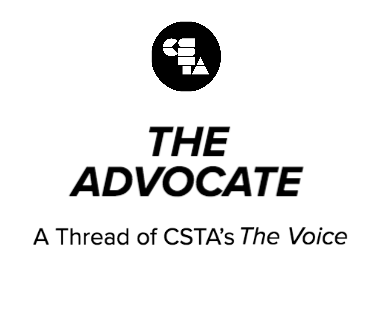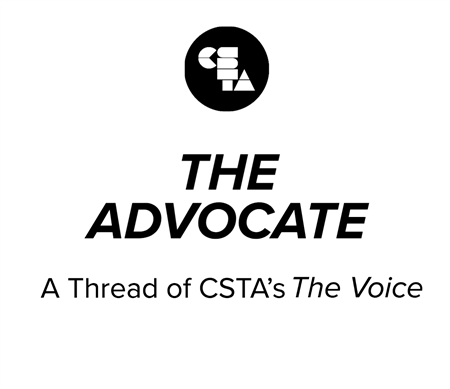
I’ve been fortunate enough to have some great conversations about what CS teachers need to know over the last year.
Full Story
I’ve been fortunate enough to have some great conversations about what CS teachers need to know over the last year. Stakeholder groups, including teacher education programs, state department of education specialists, CS and education faculty at higher education programs, are all working to figure out how to develop sustainable models of preparing computer science teachers to meet the growing demand for CS teachers.
Some of the conversations are driven by and informed by the current process to refresh the CSTA and ISTE Standards for CS Educators. In January 2019, CSTA and ISTE began work on these standards, which seek to set clear goals for CS teachers know and be able to do in the classroom, serve as aspirational goals for CS teachers, and establish benchmarks for those providing learning opportunities for CS teachers. The second draft has now been released and is available at csteachers.org/page/standards-for-cs-educators for comment until October 11th. The final version is expected to be available by the end of 2019.
Other conversations have been very focused on practical matters, including what should be included in a computer science methods course. Here is a list of items that education and computer science faculty brainstormed during a workshop sponsored by the Maryland Center for Computing Education this summer. Workshop participants drew on their experiences teaching methods courses for generalist educators (often at the elementary and middle school level) and for secondary educators seeking licensure in a specific topic.
- CS Subject Matter Knowledge (SMK), in particular for generalists as they may not have had a standalone course in computer science
- CS Pedagogical Content Knowledge (PCK) – how to teach computer science
- Evaluating curriculum – how to choose a curriculum that aligns with relevant standards, is relevant to students, engages students, etc.
- Unit Planning – how to create a set of lessons that build on each other to achieve learning objectives
- Understanding and aligning with student standards (e.g. CSTA K12 Standards)
- Common misconceptions in learning computer science, including how students construct models of how a computer works
- Classroom management, especially managing instructional technology and devices
- Formative and summative assessments of computer science learning
- Designing instruction for all students, including those with learning or physical disabilities and those typically underrepresented in computing
- Understanding professional codes of ethics for computer scientists and the impacts of computing
- Supporting students in learning academic vocabulary as well as reading in the content area
- Teaching methods for computer science, including strategies such as peer instruction, POGIL, pair programming, worked examples with subgoals, Parson’s problems, and many more
- Integrating computer science in other content areas, in particular for generalists
- Field experiences – a teaching placement in a school that includes computer science
Of course, this is not an exhaustive list of what might be included in a CS methods course, nor would all of these topics necessarily be included in a single methods course. Teacher educators may need to consider their local context, including where there is overlap with other areas of their education program and the state licensure requirements. But, it is a start and I’m looking forward to having more conversations in the future with stakeholders working on developing sustainable programs for computer science teachers.
 Jennifer Rosato
Jennifer RosatoBoard Chairperson

